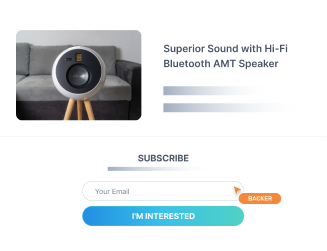Why Most Ideas Fail?!
We all have ideas. Most are not great.
It’s, therefore, crucial to find out if you are on the right track as soon as possible. To give yourself room to change and improve something before entering full-scale production. Because investing resources in the wrong idea is, at best, a waste of time and energy. And if you’re not careful, it can even turn into a financial disaster and sink your brand.
This sounds obvious. So why doesn’t everyone run some kind of fake door testing to make sure that there is demand?
Many founders suffer from optimism bias, which prevents us from challenging our own ideas. We develop something we believe in, and show it to a few friends and family who confirm our belief. And by the time we put it out into the real world, our belief in our success is so great that we expect everyone else will flock to the idea!
Even when these negative opinions increase, our optimism makes us deaf to critics saying, “This might not work.” And this continues on through the launch. But what was once just an opinion, by this point, has turned into a more harmful and evident lack of sales.
That’s one of the main reasons why 80% of all product launches fail. There’s simply no demand after launch. But it shouldn’t come as a surprise! There also wasn’t any before the launch — had the product owners cared to carry out some fake door testing and listen? And so, companies spend an average of 15 months and $300,000 on developing new products doomed to fail.
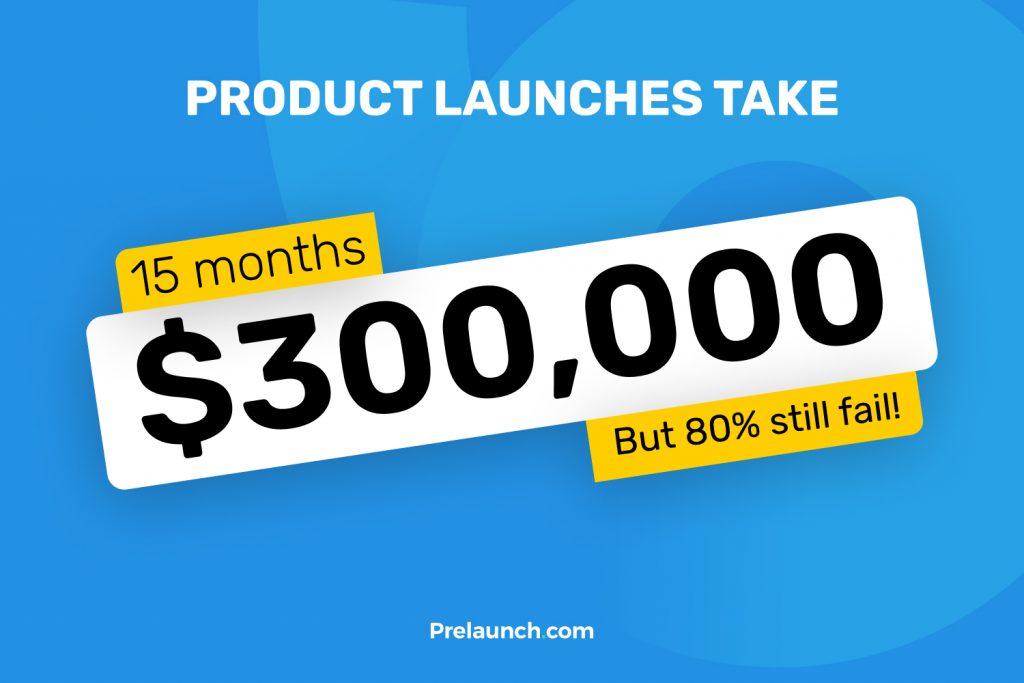
What are the best solutions the industry has come up with so far?
Surveys and widely used focus groups don’t work as they are all based on opinions. While opinions can be important, asking the right people is more important.
Even if you have a perfectly structured survey, you can’t be sure that you’re asking the right people. It’s possible they bought something similar. They might have even been your previous customers. But there’s no guarantee they’re the right audience for you now. And as a result, they might not buy what you’re building right now.
So how can you ensure you have the right insights from the right people before investing huge resources in developing your product?
That’s what we’ll be looking at in this article. We’ll cover the best methods currently available to product owners, like the painted door test or fake door testing, and offer some insights into what the future holds. By the end of this article, you will know:
- How to get the right people on board and learn from them early
- What is fake door testing
- What a fake door MVP or fake door prototype is
- What to include on a fake door landing page
- How to base your decisions on their behavior rather than opinions
- How to measure their interest in your product
- How to be sure that they’ll buy it
- How to find the ideal price you should launch at
- And much more
So, let’s jump right in!
Fake Door Testing: Actual Purchase Behavior Requires Skin in the Game
While surveys and focus groups measure what people think, there’s one method that many companies use, which is based on people’s actual behavior.
It’s called a Painted Door Test or Fake Door Testing. And the concept is really simple. The goal is to mimic a real store and have people walk through the real sales process — including buying! — only to discover that it was a ‘Fake Door.’
The most typical example is to create a seemingly-real online store. You showcase your non-existent product as though it exists, with a price, estimated shipping, and everything else as though it were a real online shop. And then, you drive traffic to that page via Facebook ads.
Then, you measure who actually bought it, your conversion rate, and the return on your ad spend. All else being equal, this is a powerful indicator of what your real product’s metrics will be, as it’s measuring the actual purchase behavior instead of asking if you’ll buy this or not.
But wait… a shop that pretends to sell something that doesn’t exist? Isn’t that a scam?
Kind of, but not really. For starters, don’t worry. It’s not stealing! Whoever buys your non-existent product gets an immediate refund with a message that the product is not yet available.
However, this system definitely has its drawbacks — as the name implies, it’s… fake!
Advantages of Fake Door Testing
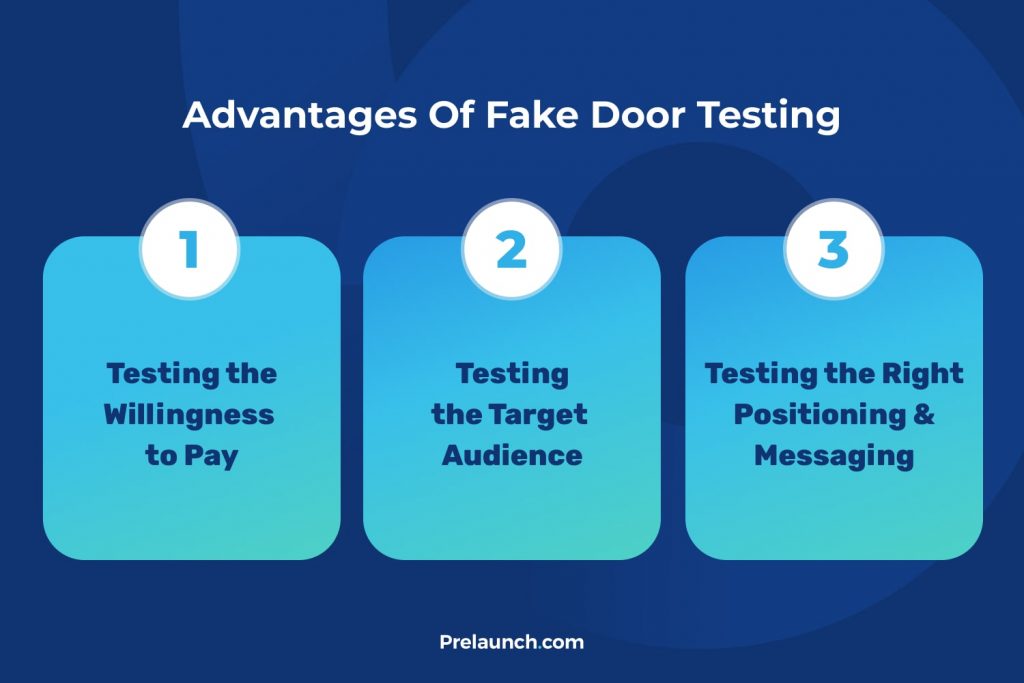
There are many benefits to Fake Door testing that can’t be achieved with surveys, focus groups, and other industry-standard methods. Among these are the ease of setting it up — you can do it by yourself, with minimal digital experience — the opportunities to test different angles and the accuracy of the data it provides.
Surveys and focus groups try to get relevant audiences to answer questions related to your product and their buying decisions. But this presents 2 challenges:
- How can you be sure that they’re your relevant audience?
- How can you be sure that they’re telling you the truth?
It’s nearly impossible to narrow down your audience perfectly through surveys and focus groups, as the selection is based on the subjective opinion of the founder. And even if it is run by a capable marketing team, there’s still no guarantee that they’ll define the right audience on the first go 100% of the time. Expecting anyone to accurately predict this every time is misguided!
But let’s say that you do find the perfect audience; what’s to say that they’re answering truthfully? Not only that they’re not knowingly lying, but even in the best-case scenario, how can you be sure that what they think they’ll do is what they’ll actually end up doing?
This problem, explored in depth in The Mom Test, has many roots. The primary example — and where the book got its name — is the unreliability of asking your mom whether she likes your idea… of course, she’ll say yes! Would she buy it if it wasn’t your idea, though? How can you be sure?
These 2 problems plague current methods to gather insights into your product and audience. But not Fake Door testing!
Testing the Willingness to Pay
One of the most important benefits of the Fake Door testing method is that it tests the actual purchase intent of customers. It’s not based on opinions and desires. It only shows what customers will actually buy.
And by playing around with the price, audience, and messaging on the page through careful A/B tests, you can iterate through product cycles quickly until you land on an idea that is guaranteed to work!
Testing the Target Audience
Building on the previous benefit, you can also test your audience. Many early founders panic when their product doesn’t immediately take off. But you shouldn’t make any rash decisions and trash your idea too soon. You might just be targeting the wrong audience.
By targeting different groups and monitoring the results, you can clearly see if the audience you are targeting is buying your products or not. Then you can test different interests, countries, and demographics until you find the perfect audience(s) for your product!
Testing the Right Positioning & Messaging
Once you think you’ve found the right audience and price, and have a significant amount of visitors on each variation, change the visuals, messaging, and overall positioning to see how the audience reacts.
This helps you hone in on your unique selling proposition, improve the way you communicate the value of your product, and even play around with the features and benefits you’re thinking of including in your product.
Many times, a feature you think is central to your product actually turns out to be less important than something you’d overlooked!
Just be aware that it’s dangerous to change things too quickly. You need to have at least 1,500 – 2,000 people landing on each variation to be able to derive the right conclusions. Otherwise, you might end up killing a version that indeed had lots of potentials.
Disadvantages of Fake Door Testing
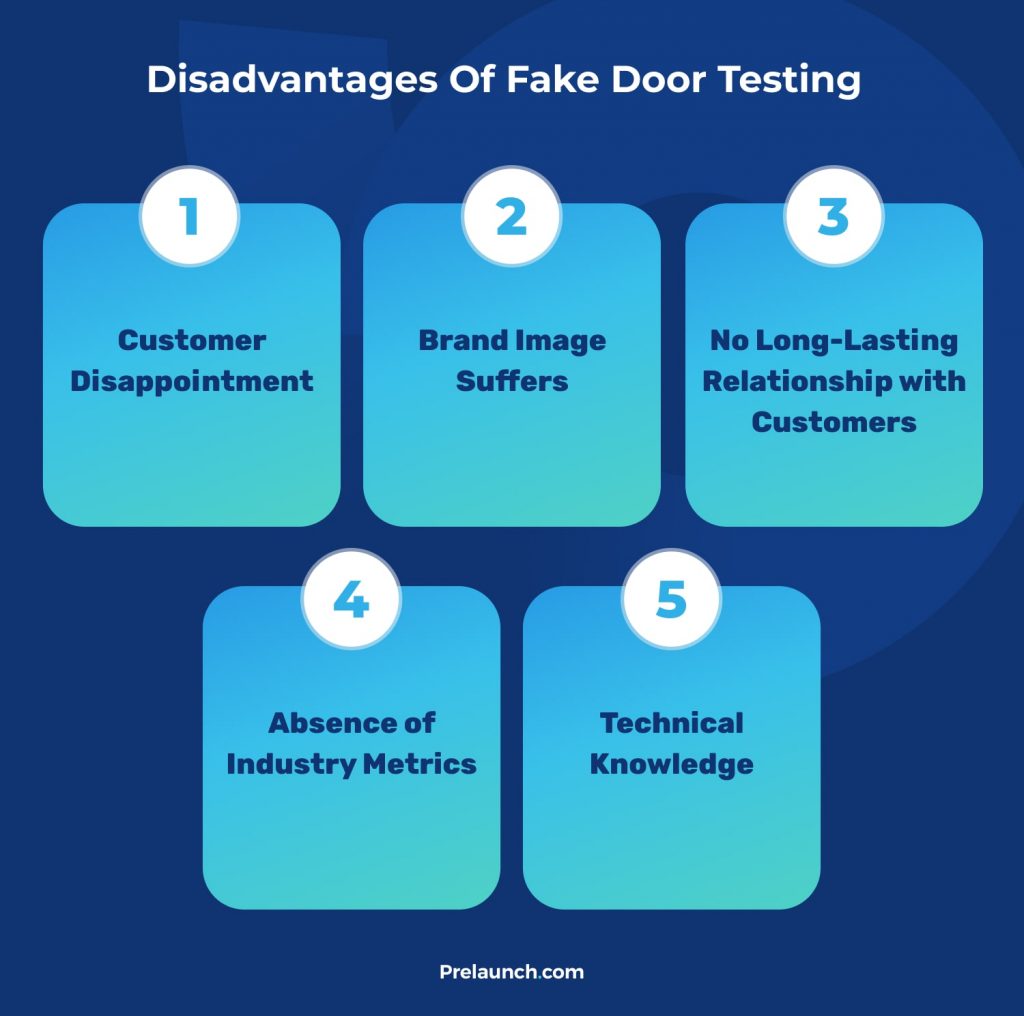
While Fake Door testing is more accurate and reliable than focus groups and surveys, the method still has some drawbacks because, well… it’s fake! Let’s look at some of the main problems you’ll run into with a Fake Door testing strategy.
Customer Disappointment
When a customer places a payment, they receive a refund immediately.
While they’re not technically robbed or cheated out of any money, the process does leave them feeling cheated and disappointed nonetheless. They went through the ordeal of reading through the sales page, fishing for their card details, and filling everything in — only to be presented with an immediate refund!
It’s only natural for those customers to go off thinking, “If they didn’t have it in stock, why not just tell me at the beginning and save me the pointless hassle?!”
Sometimes the disappointment caused is big enough to lose their future business and even receive negative press!
Brand Image Suffers
Many brands can’t openly and transparently discuss their products with customers. This isn’t only because of the above problem but can also be due to R&D secrecy and company IP privacy policies.
This leads to many large companies not using their real brand names during testing and coming up with new ‘fake’ brands. This, in turn, means their products don’t benefit from their own brand awareness and appeal, and the resulting data is not indicative of real-world scenarios.
No Long-Lasting Relationship with Customers
Without real brands, there are no relationships… it’s that simple!
And even for brands who do take the risk of using their real name, without the very real promise of a product at the end of the testing journey, why should they stick around?
Customers don’t get any value — hence there’s no relationship. And without a relationship, you can’t really develop a community, ask them questions, get to know your customers, and gather insights.
Absence of Industry Metrics
Another issue with Fake Door testing is that creators can’t get the right insights from their metrics in silos. If everyone is testing their products independently from one another, how can they know how successful their launch is going to be?
Is a 20% subscription rate good? For that product and that audience? What if the price was $50 cheaper? Should the subscription rate bounce up to 25%? Or 30%?
Not having industry benchmarks that take into account things like product niche, audience, location, season, price, and more, limits the usefulness of the data of Fake Door testing and limits the amount of decisions creators can make.
Technical Knowledge
If you’re a technical founder or have a team of experienced developers and marketers, congratulations!
But for the rest of us, it can be hard to create a fake door landing page, get a domain and hosting set up, connect a Stripe account, set up all the Google tags and dashboards, run Facebook ads, set up an email marketing service, and connect all the necessary tools to automatically send surveys to those people who subscribed.
From Fake Door Testing to Glassdoor Validation
Fake Door Testing is relatively good, or at least better than no testing at all! However, there has to be a better way. One that is more transparent allows creators to establish deeper connections with their audiences and help to build a community prior to launch that will increase the chances of making informed decisions at every single step.
After 3 years of testing and experimenting with different formats, running hundreds of tests for established and newly-created brands, building dozens of communities, and collecting petabytes of data that accurately predicts launches, we distilled all the elements that are required to build a better testing system.
Most importantly, we found a way to upgrade the Fake Door Testing model to more transparent testing — what we like to call Glassdoor Validation.
How Prelaunching (aka Glassdoor Validation) Builds on Fake Door Testing
Instead of faking a website and putting nonexistent products on a landing page, what if you could talk openly about your product’s status and ask your potential customers to reserve it? Rather than fooling them into ‘fake buying’ it and refunding them, just offer them a discount later in exchange for a reservation now. It’s simple, it’s transparent, and it’s ethical.
You get all the benefits of Fake Door testing:
- By pulling out their credit cards and placing a $5-10 reservation, visitors prove they have skin in the game
- You can test your audience and track their conversion rates
- You can change product features, positioning, and messaging and track the lift
With none of the disadvantages:
- Customers don’t feel lied to as they know that the product isn’t ready yet
- Brands don’t need to worry about their brand image as there’s nothing dishonest happening (but they can also protect their IP by running a smaller scale private prelaunch)
- Creators can build a community of engaged early supporters
And by running this for 100s of different product launches over the past 3 years, we also built a sizeable benchmark database — that is constantly growing with every new launch — and refined the prelaunch process so that even the least technical team members can handle a campaign on their own.
It turned out to be so effective that we eventually built Prelaunch.com. To help other founders improve their chances of success, so that prelaunching products was not just some internal secret methodology our team could run but something that any founder or enterprise, big or small, could use to validate their own products independently.
How does it work?
Prelaunch.com is a product validation platform designed for creators to prelaunch, showcase, and validate their coming-soon products. The system revolves around 2 easy-to-build pages:
Testing Interest
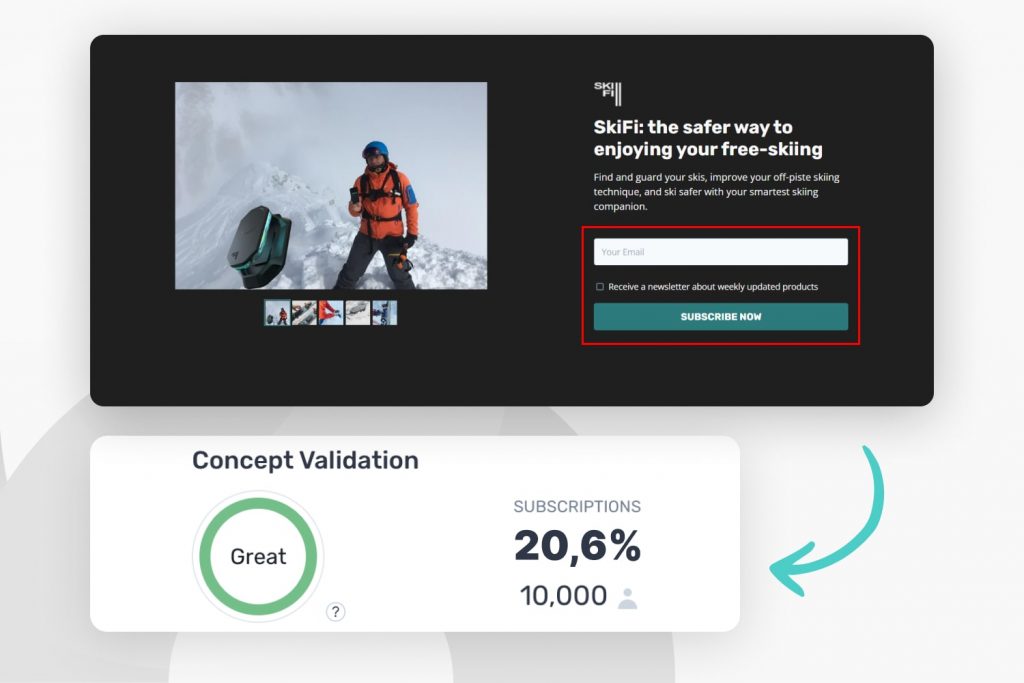
On the first page, you show the concept or idea of the product. Visitors can read about it and look through the pictures. And if they’re interested enough to scroll down, they’ll find a button that they can use to subscribe and learn more.
This page tests for interest in the concept itself, regardless of the cost. If money were no object, would people want to use your product?
Testing Price
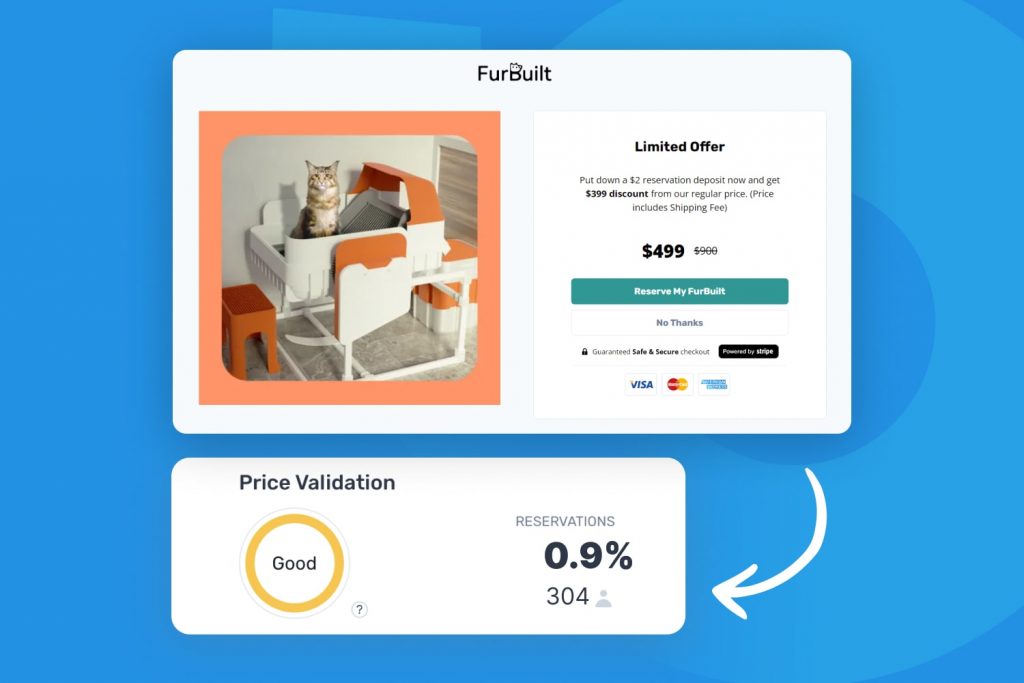
On the second page, you show people who have shown their interest in the concept how much it will cost them. And you offer a small discount in exchange for a small deposit they can place to reserve the discounted price.
This page tests the price people are willing to pay.
Then in the dashboard, you can see whether people love your idea or not and, most importantly, if they are ready to buy it.
Why is this so powerful?
Because by requiring people to leave a monetary reservation, they’re proving their actual purchase intent. People pulling out their credit cards and reserving the products — this is the best validation ever.
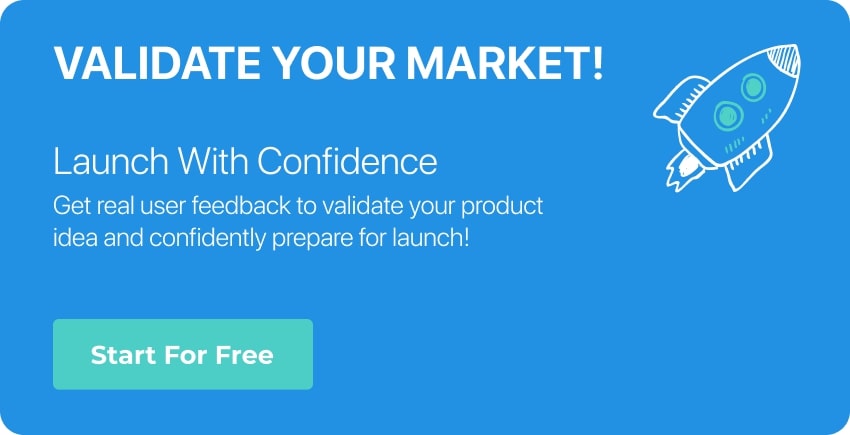
Using Prelaunch.com, both of these pages are easy to build thanks to the built-in AI copywriter — trained on hundreds of successful prelaunch pages — and the guided drag-and-drop page builder and included templates that let you know the best way to layout your pitch. This removes the technical knowledge that Fake Door testing requires you to have in order to test your product.
But it’s by leveraging the powerful insights of the dashboard, and getting real-time feedback based on relevant benchmarks, that Prelaunch.com truly redefines the validation system.
Achieve Greater Understanding with Smart Dashboard Insights
With all that data being collected and the value provided by the predictions, there needs to be a central location where you can monitor the state of your prelaunch campaign. Prelaunch.com empowers your validation with a powerful dashboard that gives you insights into your product’s performance. Both within the variations you create and also in comparison with similar products in your niche and price point.
All this helps you intuitively discover whether you are in the top 1% or below the market average:

On the left side, you can track how many visitors landed on your page. Due to the rigorous testing and comparing that goes on, we recommend a minimum of 3,000 visitors per variation. This gives your results enough statistical significance to be able to make accurate predictions.
In the middle is Concept Validation. This shows the number of people who subscribed to learn more about your product and their ratio compared to the total number of visitors. They hadn’t seen the price yet, so this is just a measure of market interest in your idea.
And on the right is the Price Validation. This shows the total number of reservations and the ratio of these compared to the total number of visitors. As people who reserve have seen the price, this metric tells you whether or not people are ready to pay for your product.
For example, if your Concept Validation is Great, but your Price Validation is Bad, that means people are interested in your product but are not ready to buy. You can play with the price, increase it and decrease it to look at the data and see how it goes.
But when both metrics are Bad, then you need to make some significant changes to your page — and maybe even your product — and start a new variation!

More important than any of the above metrics is your Prelaunch Score. This is your product’s health score, which shows how well you are doing by combining, weighting, and analyzing 30+ metrics.
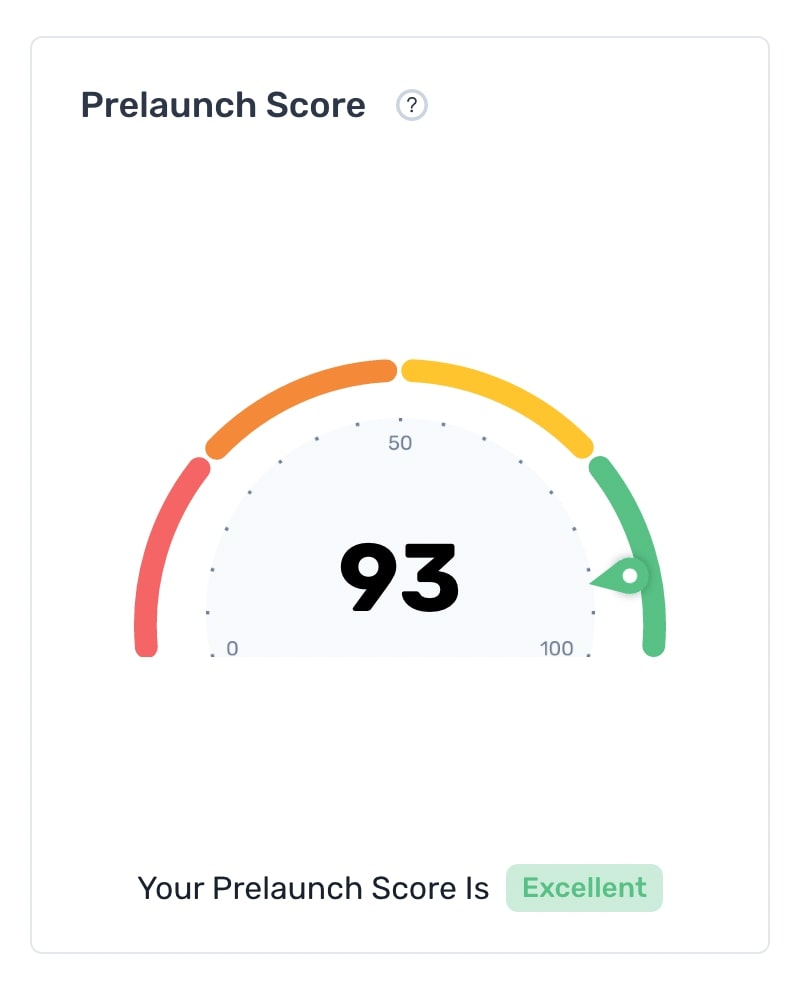
The dashboard also shows you how well you are doing compared to similar products in your category and price. The following chart shows important metrics, such as whether or not you are in the Top 1% of your industry according to your subscriptions, reservations, or other ratios.
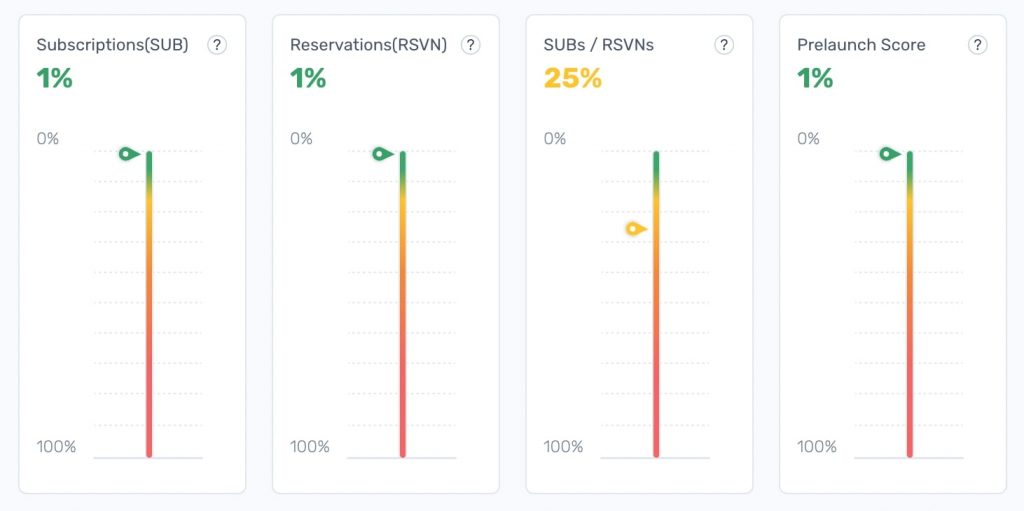
These comparative metrics help you understand not only how well you are doing but also how well you are doing compared to others.
Of course, these powerful simplified metrics are great for getting a clear real-time image at a glance, but some of you will want more detailed data. How much has been spent on ads? What’s the cost per ad click? How many people are clicking on your ads?
More advanced users appreciate these powerful charts that show you how each of your variations is doing, as well as metrics that will help you understand what you need to change when things are not great:
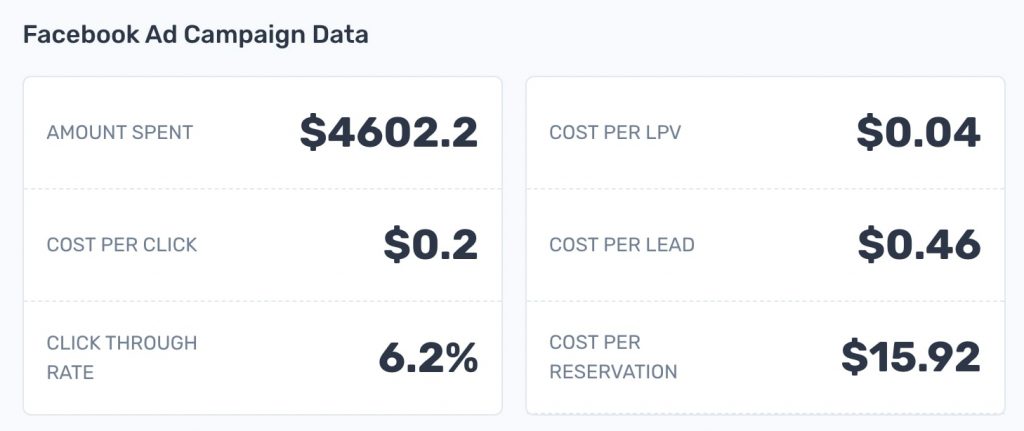
Getting Insights from Your Customers
Some things can’t be measured in pure numbers, though. For all this qualitative data, Prelaunch.com uses advanced surveys to gather in-depth relevant insights into your potential customers and their thoughts on your product.
When your potential customers subscribe or reserve products, they automatically get these surveys. But these are not just any old surveys. These are targeted surveys aimed at your ideal target audience who just proved that they were your buyers when they gave you money for your non-existent product. That is credible proof that they want to have your product and are ready to help you improve it.
There are lots of potential questions you can ask your audience. But surveying our users’ surveys, the most useful questions product creators tend to ask include:
- Why did you reserve this product?
undefined - What did you like the most?
undefined - What similar products have you owned before?
undefined
All these responses are gathered in an easily digestible dashboard, showing you the number and percentage of people who agreed with each point:
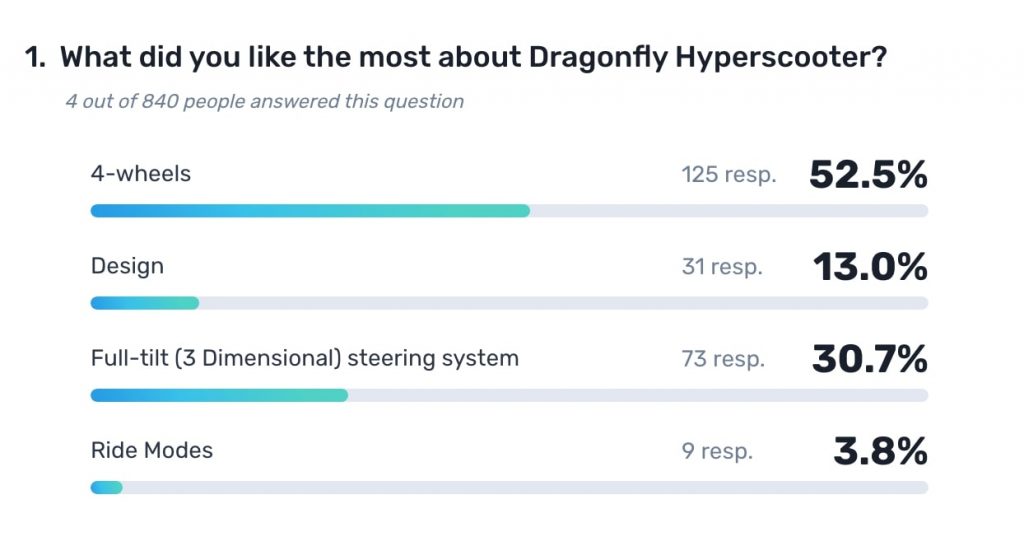
The Marketplace of Coming Soon Products
Imagine getting access to what your favorite brands are working on before they are available to the larger public. And being able to reserve what you like, give valuable feedback, and get significant discounts. That’s what Prelaunch.com is to consumers.
From a consumer’s perspective, Prelaunch.com is a unified platform of coming soon products. A marketplace where they can reserve products that are not live yet by placing a small deposit and help in their creation by engaging with the product creators.

Reservations are 100% risk-free for consumers. When creators decide not to move on with production, consumers get a full refund. And consumers can cancel their reservations whenever they want to, as long as creators haven’t started shipping.
This marketplace is where many visitors will organically discover new products, including yours. Serving as a powerful and free traffic boost for your campaign, a pool of people interested in innovations who might join your early-stage community and people who will end up pre-purchasing your product!
Prelaunch Your Way to Success
Prelaunching is the most accurate method that not only predicts how well you are doing and how well you will do once you launch your product but also helps you find out where your problems are and what you need to change to achieve better results. It helps creators save hundreds of thousands of dollars otherwise spent on product development and production — on products that nobody really wants.
Prelaunching also uncovers untapped opportunities, as in the case of Kitty Spring cat water fountain. Initially, Kitty Spring’s creators were planning on launching their new product at a price point of $29. After months of research, they had landed on that as the ideal price. No competitors were charging more for similar products, so it was safe to assume that customers wouldn’t pay more. But after a few weeks of validation on Prelaunch.com, they discovered that the market was ready to pay $44!
They were able to increase the price by over 50% without affecting conversion rates! They launched Kitty Spring at $44 and ended up generating $1 million in revenue in a few months!
And Prelaunching goes beyond validation — it helps establish long-lasting relationships with your customers, be transparent about the product status and develop products together. You have a team of ten? That’s great. Now imagine you have a team of a thousand people who are your target customers as well and are ready to give you the feedback you need to improve your products at every stage.
So rather than just launching your next product without knowing how it will perform, rather than spending 18 months and $300,000 developing it, rather than stressing out and worrying about your shrinking budget and diminishing returns… why not validate it first?
Launch with confidence by running your own Fake Door test. Or take the easy and fast route to reliable results to product validation that compare you to the market by prelaunching before you launch on Prelaunch.com.


